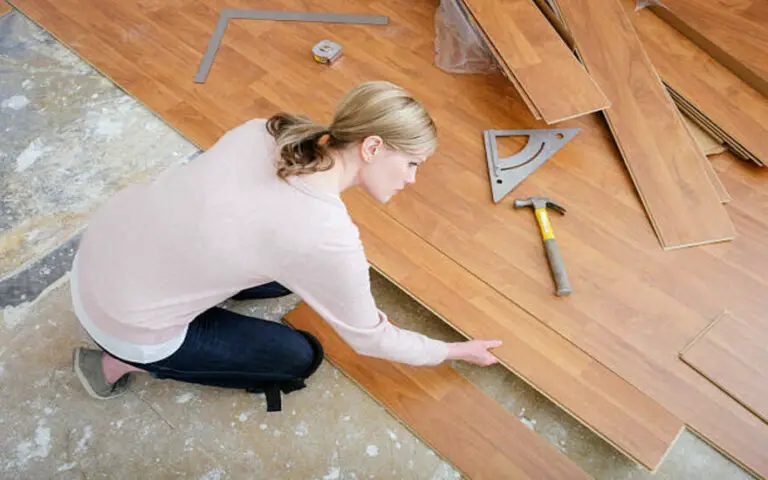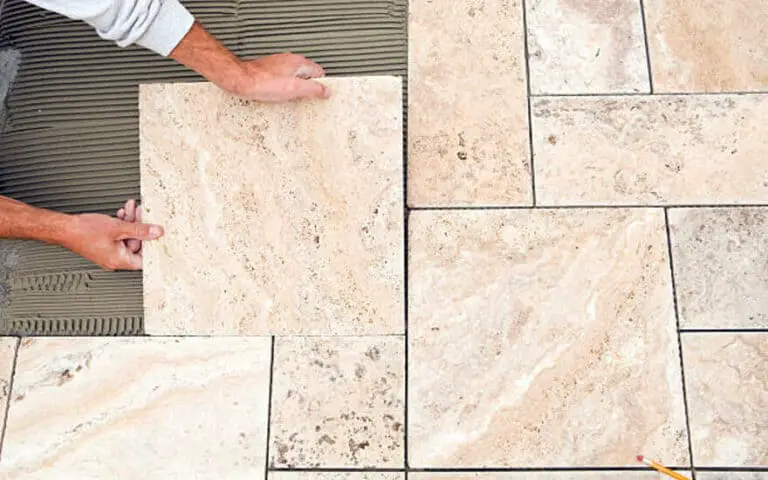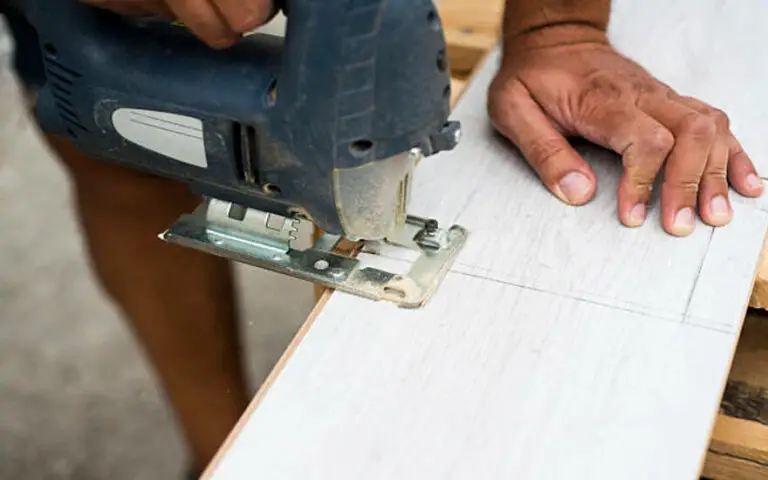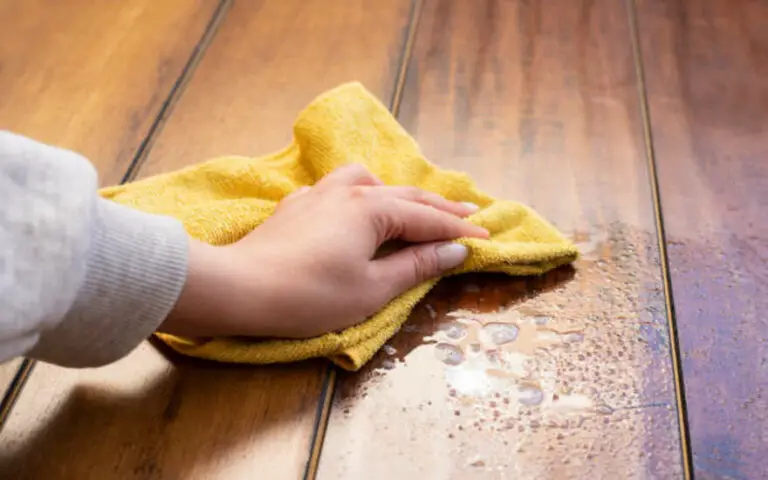If so, then a contour gauge is a must-have tool! I’ll show you how to use it in this blog post so that your laminate floor installation goes off without a hitch.
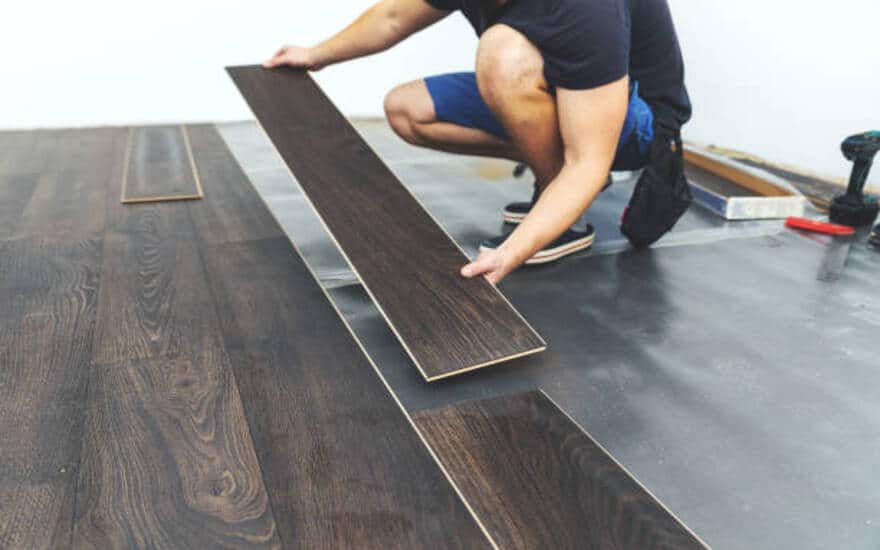
How to use a contour gauge on laminate flooring: Step-By-Step Guide
Now that you’ve prepared the floor for the contour gauge, it’s time to install it. First, place the pins of the contour gauge against the object that your laminate will be joined with. Then, adjust the contour gauge to fit the floor. This can be done by using the knobs at the bottom of the gauge to tighten or loosen the pins.
Once you’ve adjusted the gauge to fit your floor, it’s time to trace along the lines with the contour gauge. After tracing, use a jigsaw to cut along your traced lines. This will ensure that all your pieces fit together perfectly and your installation will look professional.
Step 1: Prepare the floor for the contour gauge.
Before using a contour gauge on your laminate flooring, you must prepare the floor properly. This includes ensuring that the surface is clean and free of debris and dust and that the edges are smooth and level.
When using a floating floor, it is also important to check the manufacturer’s instructions for guidelines. Once your floor is prepped, you can move on to the next step – installing the contour gauge.
Step 2: Install the contour gauge onto the floor
Installing the contour gauge onto the floor takes only a few minutes. Start by placing the tool on the floor, ensuring the teeth touch the surface. This will ensure an accurate reading and trace of the shape.
Next, press down firmly on the tool to secure it in place. Once it is secure, you can adjust the tool to fit the contours of the surface. Make sure that all teeth touch the surface for the most accurate results.
Step 3: Adjust the contour gauge to fit the floor
Once the floor has been prepared, the next step is installing the contour gauge. Depending on the size of your contour gauge, you will need to adjust it to fit the floor by using the hex adjuster. This is important to ensure that all of the teeth of the contour gauge are flush with the floor’s surface.
Once you have adjusted the contour gauge, you are ready to trace along the lines with the tool.
Step 4: Trace along the lines with the contour gauge
Once you have adjusted your contour gauge to fit the floor, the next step is to trace along the lines with the contour gauge. To do this, gently press the contour gauge against the floor, ensuring that the pins make contact with the surface. Then, slowly and carefully move the gauge along the line you want to trace.
The pins will move as you move the gauge, tracing the shape of your floor onto the contour gauge. Once you have finished tracing your desired shape, you will have a perfect replica on your contour gauge! Now you can use this replica to cut laminate flooring accurately and easily.
Step 5: Cut along the traced lines with a jigsaw
Once your contour is traced, it’s time to cut along the lines. For this, you can use a jigsaw. Make sure you use a blade specifically designed for cutting laminate flooring. This will ensure you get a clean and even cut and minimize any damage to the laminate. To cut along the traced lines, start at one end of the line and slowly guide the jigsaw along the line.
As you cut, keep the saw steady and take your time to get a smooth finish. Once you have finished cutting, you should have perfectly fitted laminate flooring!
6 Benefits of Using a Contour Gauge on Laminate Flooring
Using a contour gauge on laminate flooring ensures that you can accurately measure the contours of the flooring, quickly replicate shapes and objects, minimize waste and save money, create a smooth and even finish, create custom designs with ease, same shapes for large-scale projects and reduce the time taken for installation.
With all these advantages, it’s no surprise that a contour gauge is an invaluable tool for anyone wanting to create a professional finish for their laminate flooring.
1. Accurately measure flooring contours
With the help of a contour gauge, you can accurately measure the contours of your laminate flooring to replicate shapes and objects quickly. This way, you can minimize waste and save money while also creating a smooth and even finish.
Moreover, it makes it easier to create custom designs that can be replicated for large-scale projects, thus reducing the time taken for installation.
2. Quickly replicate shapes and objects
A contour gauge makes it easy to replicate shapes and objects quickly and accurately. The gauge can be used as a template to trace shapes onto the flooring material, saving time and effort.
It is also useful for creating custom designs, as you can trace and replicate complex shapes for large-scale projects. The contour gauge makes it easy to create a smooth and even finish for your flooring project.
3. Minimize waste and save money
Using a contour gauge to measure and trace the contours of your laminate flooring is a great way to minimize waste and save money. By measuring the flooring correctly, you can be sure that the cuts you make are exact.
This means you won’t have to buy extra materials because you’ve cut too much off or too little. Instead, you’ll be able to get the perfect fit for your flooring, saving you time and money.
4. Create a smooth and even finish
Using a contour gauge is easy to create a smooth and even finish when laying laminate flooring. The tool’s ability to accurately trace the contours of the floor makes it easy to cut the laminate boards with precision, eliminating any gaps or unevenness.
This ensures that the floor looks finished and professional with minimal effort. Furthermore, using a contour gauge can help you save time and money by minimizing waste, which can be caused by inaccurate measuring and cutting.
5. Create custom designs with ease
Using a contour gauge on laminate flooring helps create custom designs easily. The contour gauge comes with 3″ deep fingers that mold into the shape of any surface. This makes it easy to replicate shapes and objects and create a smooth and even finish.
This tool can accurately measure flooring contours and quickly replicate the shapes. This way, you can create custom designs with ease, saving time and money in the process.
6. Duplicate shapes for large-scale projects
If you’re working on a large-scale flooring project, using a contour gauge can be a great way to save time and money. It can help you accurately measure and duplicate shapes to replicate them in multiple locations. This can help you create a consistent look throughout the entire project and reduce the time taken to complete the installation.
It can also help you minimize waste by ensuring that all pieces fit perfectly into place.
Summary
Using a contour gauge on laminate flooring offers a range of benefits, from accurately measuring flooring contours to quickly replicating shapes and objects. With the ability to minimize waste and save money, create a smooth and even finish, and create custom designs easily, a contour gauge is an essential tool for any laminate flooring project. Additionally, it can help reduce the time taken for installation and provide the perfect solution for large-scale projects – making it an invaluable tool for any DIYer.



